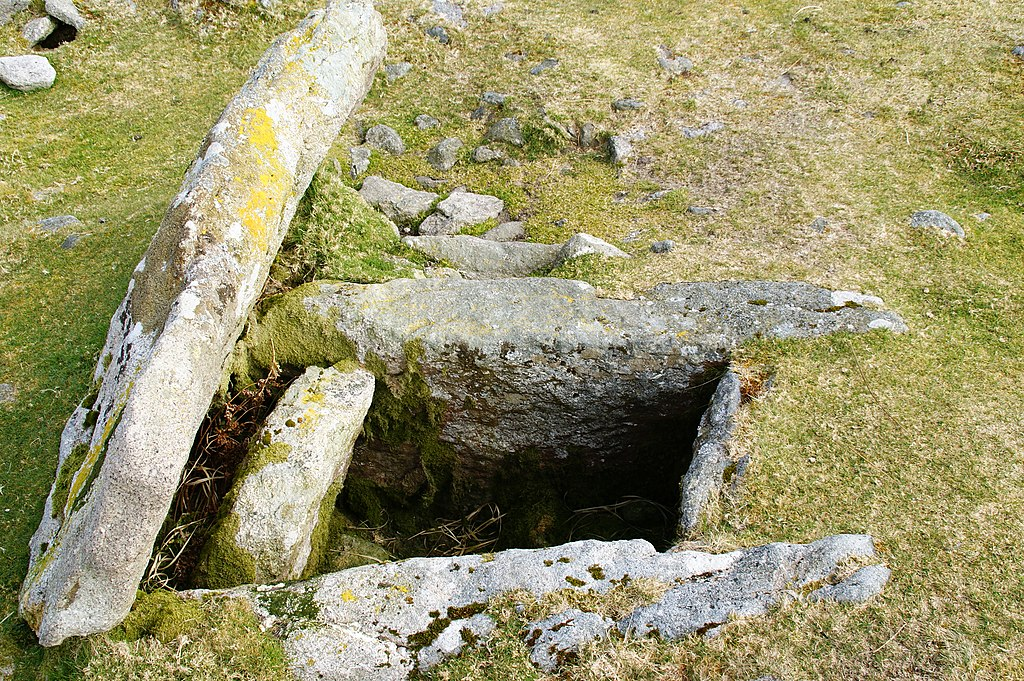Tag: Saints
-
Catacombs of Saint Gaudiosus
Are you ready for a journey into the macabre underbelly of Naples? Welcome to the Catacombs of San Gaudioso, where the dead don’t just rest – they put on a show! Nestled beneath the bustling Rione Sanità district, these 4th-century catacombs are a veritable playground for the morbidly curious. Here’s what awaits you in this…
-

Kist or Cist and Kistivan
A kistvaen or cistvaen is a tomb or burial chamber formed from flat stone slabs in a box-like shape. If set completely underground, it may be covered by a tumulus. The word is derived from the Welsh cist (chest) and maen (stone). The term originated in relation to Celtic structures, typically pre-Christian, but in antiquarian scholarship of the 19th and early 20th centuries it was sometimes applied to similar structures outside the Celtic world. One…
-
herm. and Herm.
herm. is a botanical/zoological abbreviation for hermaphrodite, a sexually reproducing organism that produces both male and female gametes. Herm. following the name of a Christian saint denotes that the saint was a hermit
-

Passion bearers
In Eastern Christianity, a passion bearer (Russian: страстотéрпец, tr. strastoterpets, IPA: [strəstɐˈtʲɛrpʲɪts]) is one of the various customary titles for saints used in commemoration at divine services when honouring their feast on the Church Calendar; it is not generally used by Catholics of the Roman Rite, but it is used within the Eastern Catholic Churches. Definition The term can be defined as a person who…
-

Boris and Gleb were the first saints canonized in Kievan Rus’ after the Christianization of the country
Boris and Gleb (Old East Slavic: Борисъ и Глѣбъ, romanized: Borisŭ i Glěbŭ; Russian: Борис и Глеб, romanized: Boris i Gleb; Ukrainian: Борис і Гліб, romanized: Borys i Hlib), respective Christian names Roman (Романъ, Romanŭ) and David (Давꙑдъ, Davydŭ), were the first saints canonized in Kievan Rus’ after the Christianization of the country. Their feast day is observed on July 24 (August 6). History Rurikids(IX—XI century) According to the two 11th-century Lives of Boris and Gleb (ascribed to Nestor the Chronicler and Jacob the Monk), they…
-

Saints Cyrus and John, Wonderworking Unmercenaries
Saints Cyrus and John (Italian: Ciro e Giovanni; Arabic: أباكير ويوحنا, romanized: Abākīr wa-Yūḥannā; died c. 304 or 311 AD) are venerated as martyrs. They are especially venerated by the Coptic Church and surnamed Wonderworking Unmercenaries (thaumatourgoi anargyroi) because they healed the sick free of charge. Their feast day is celebrated by the Copts on the sixth day of Tobi, corresponding to 31 January, the day also observed by the Eastern Orthodox Church; on the same day…
-

Saints Cosmas and Damian are regarded as the patrons of physicians, surgeons, pharmacists and twins
Cosmas and Damian (Arabic: قُزما ودميان, romanized: Qozma wa Demyaan; Greek: Κοσμᾶς καὶ Δαμιανός; Latin: Cosmas et Damianus; c. 3rd century – c. 287 or 303 AD) were two Arab physicians and early Christian martyrs. They practised their profession in the seaport of Aegeae, then in the Roman province of Syria. Cosmas and Damian were third century Arabian-born twin brothers who embraced Christianity and practised medicine and surgery without a fee. This led them…
Recent Posts
- 🧬 Disease Table with Low Sodium Connection
- 🧂 Sodium Reduction and Sodium Replacement: A History of Reformulation and Exploding Diseases, Including Many Diseases Unheard of Before Deadly Sodium Policies
- 🧂 The DEADLY 1500 mg Sodium Recommendation predates the WHO’s formal global sodium reduction push by nearly a decade (and it’s even worse than that)
- 🧬 What Is Beta-Glucuronidase?
- When Sugar Was Salt: Crystalline Confusion and the Covenant of Sweetness
Tags
ADAM ASPARTAME Birds Blood Bones Brain Bugs Cancer Columba Cows crystallography Death Death cults Eggs Etymology Gastrin Gold Growth hormone History Hormones Insulin Liver Mere Perplexity Metal Monkey Business Mythology Paracetamol Plants Poison Pregnancy Protein Religion Reproduction Rocks Salt Slavery Snakes Sodium the birds and the bees Thiocyanate Tobacco Tylenol Underworld Venom zinc
